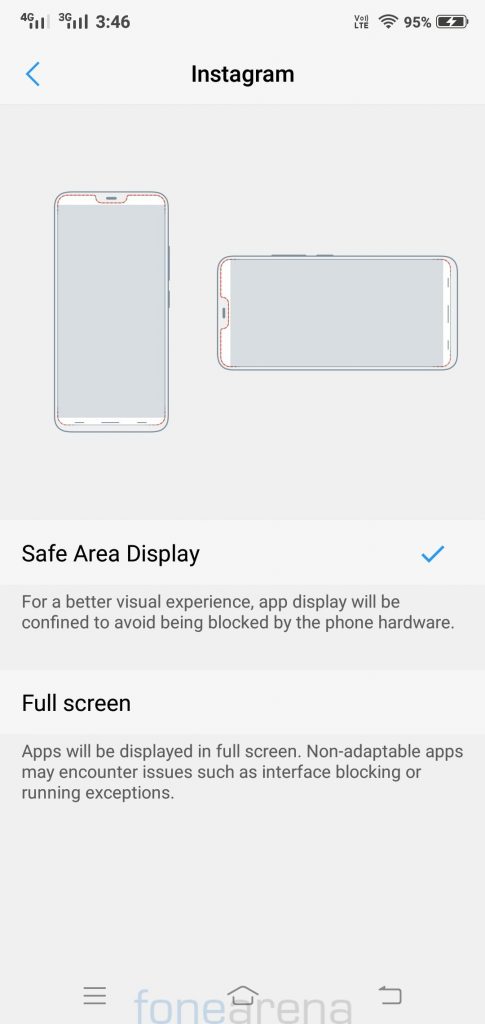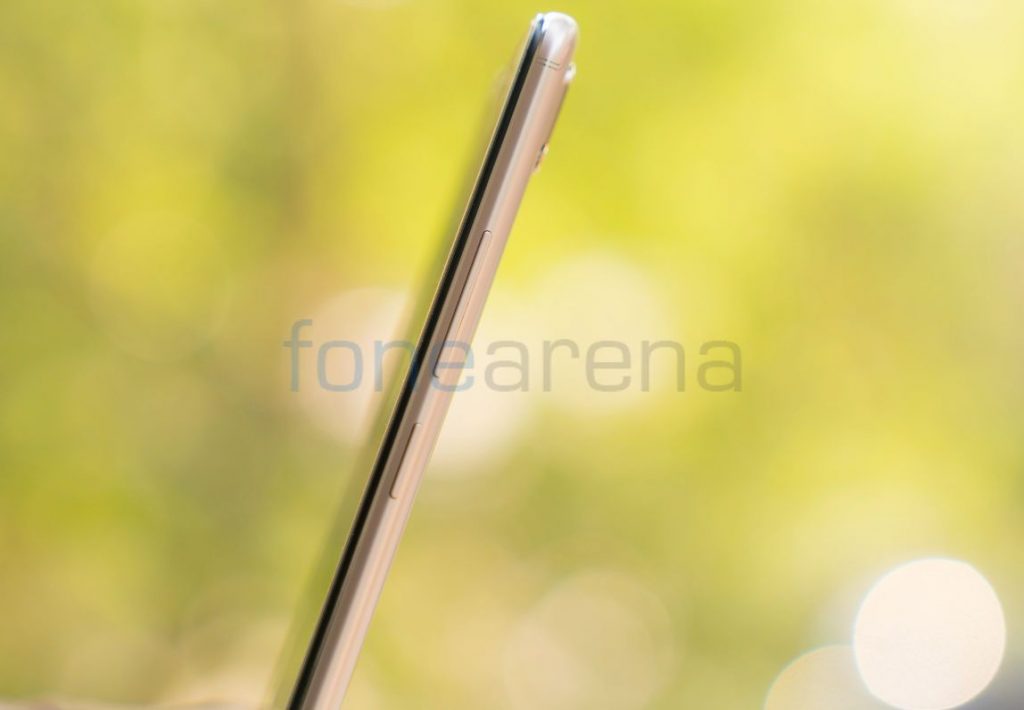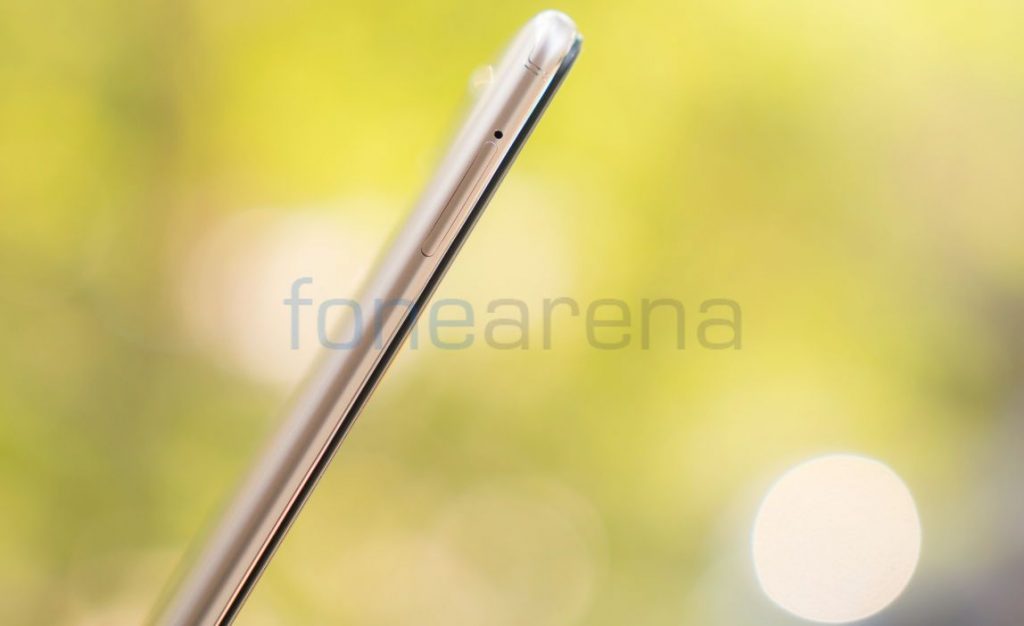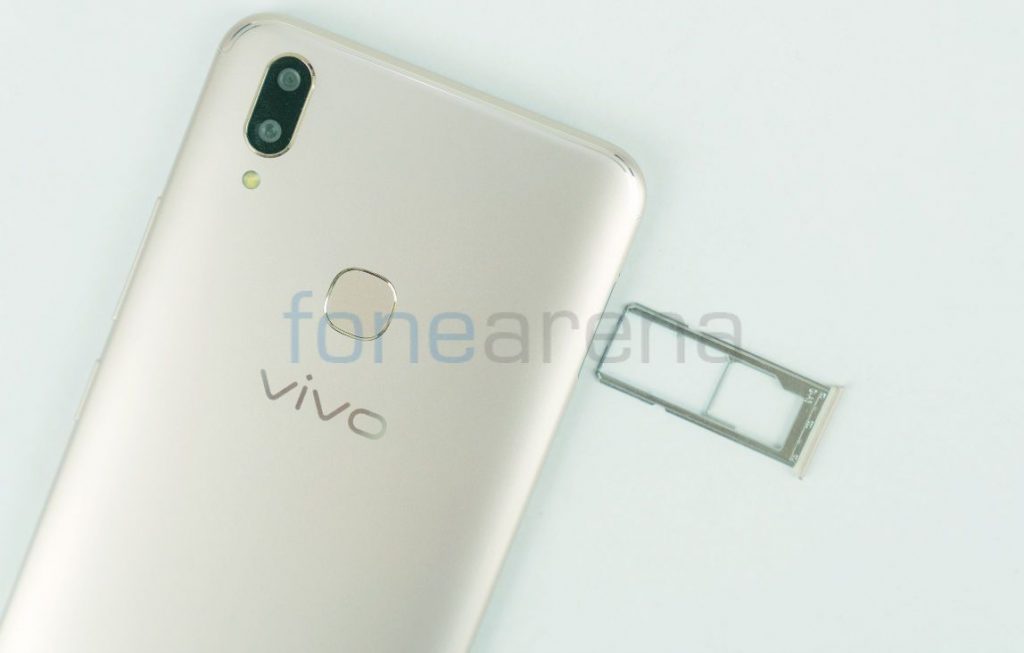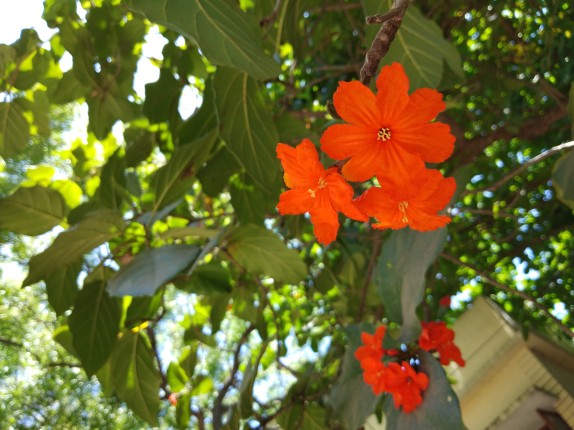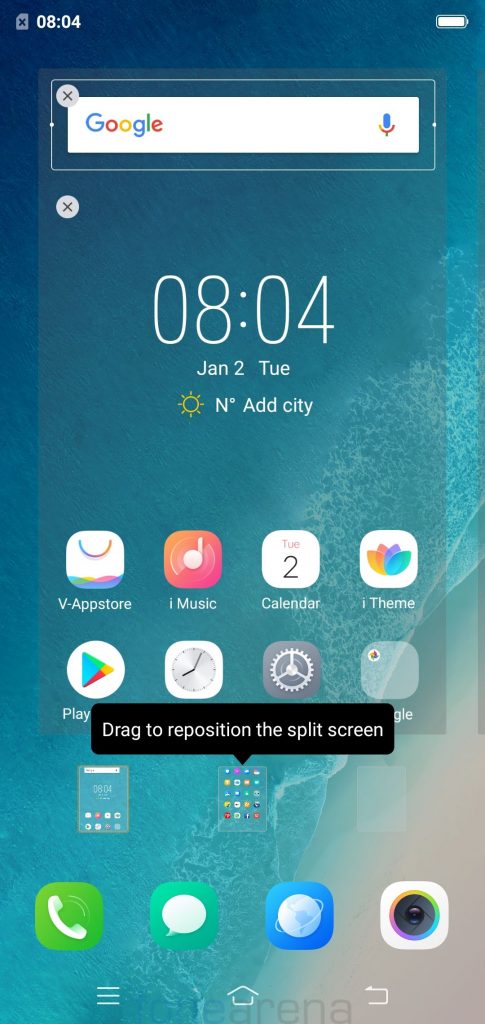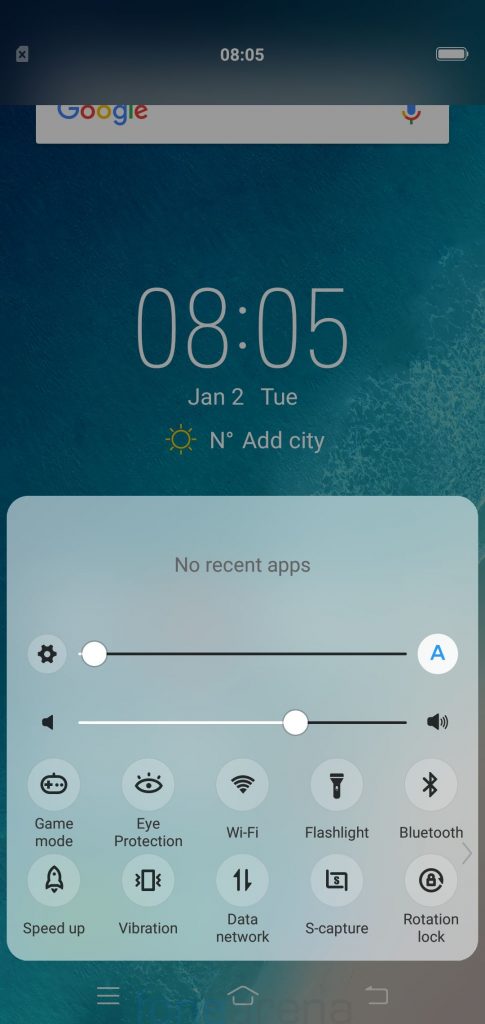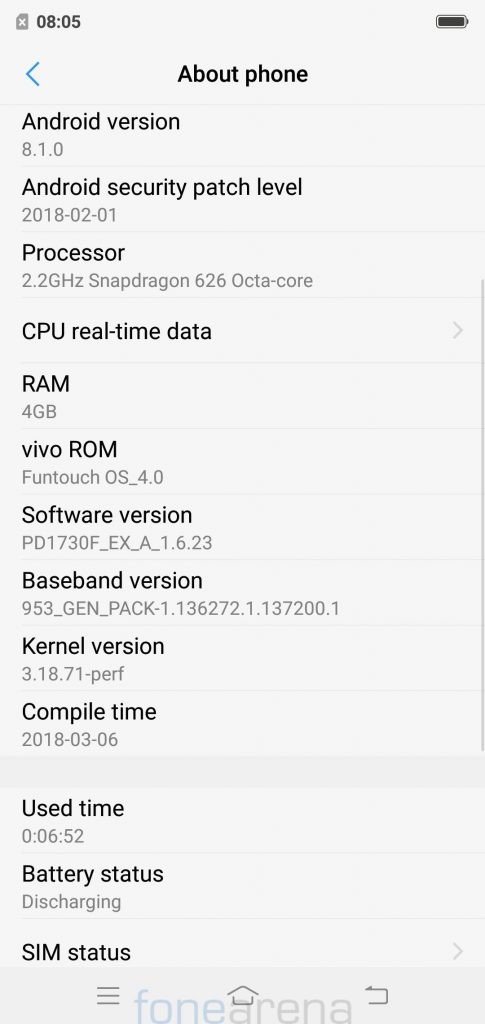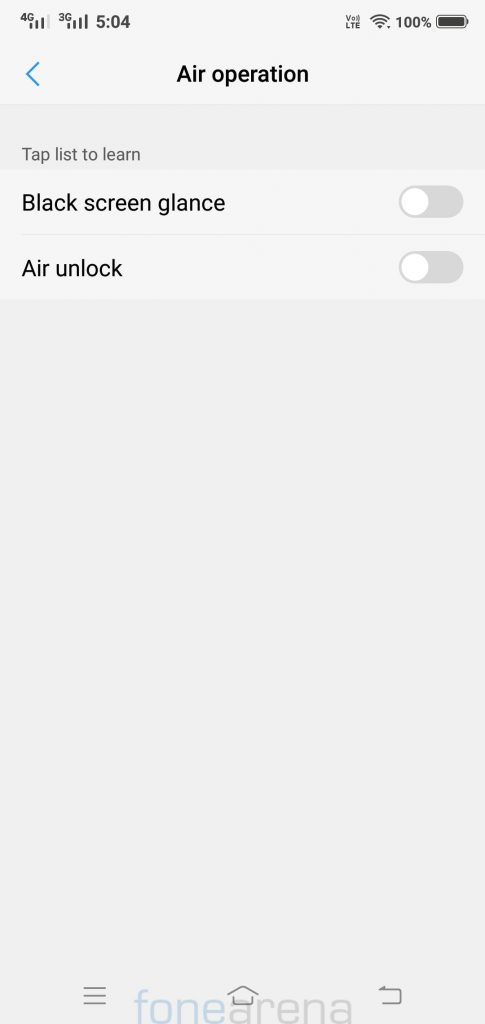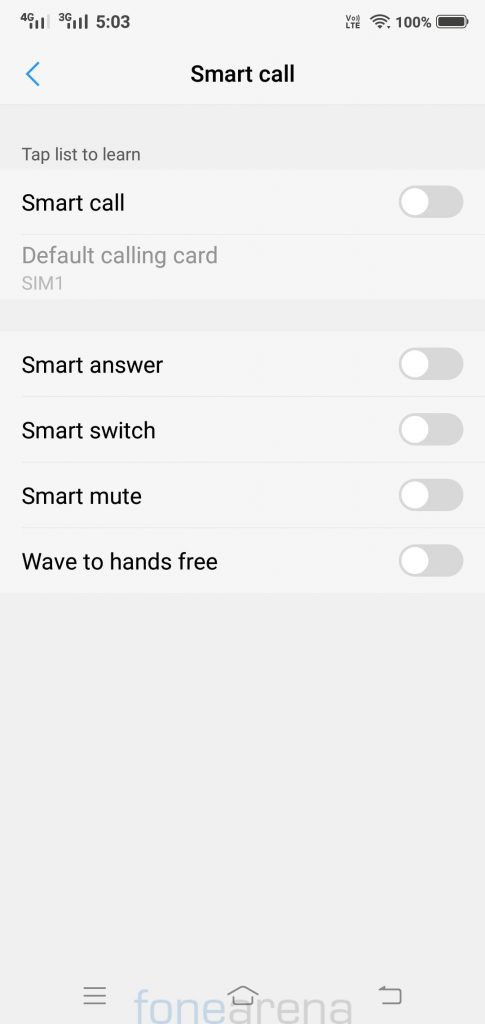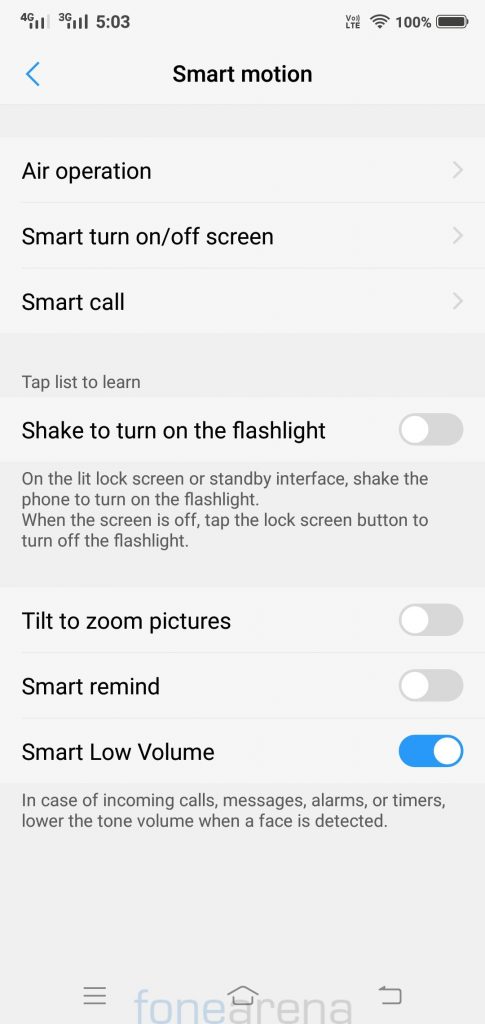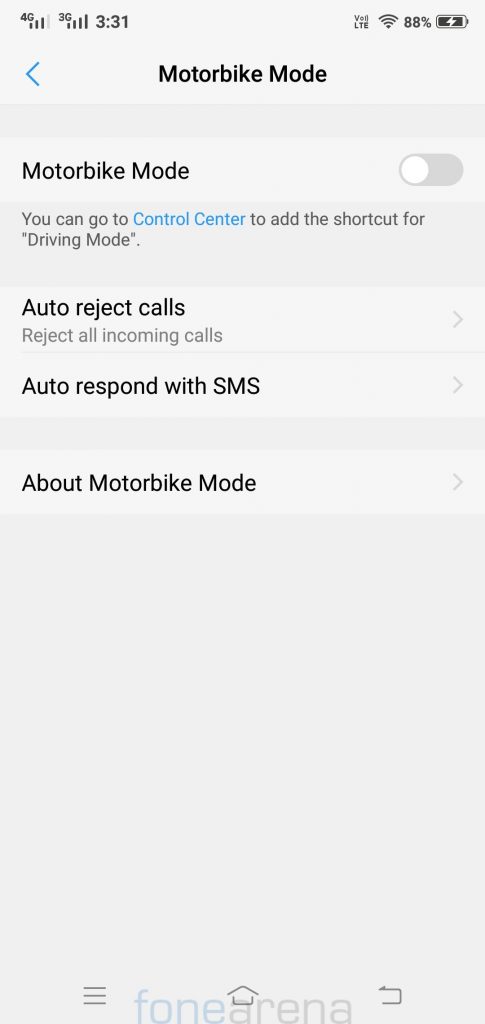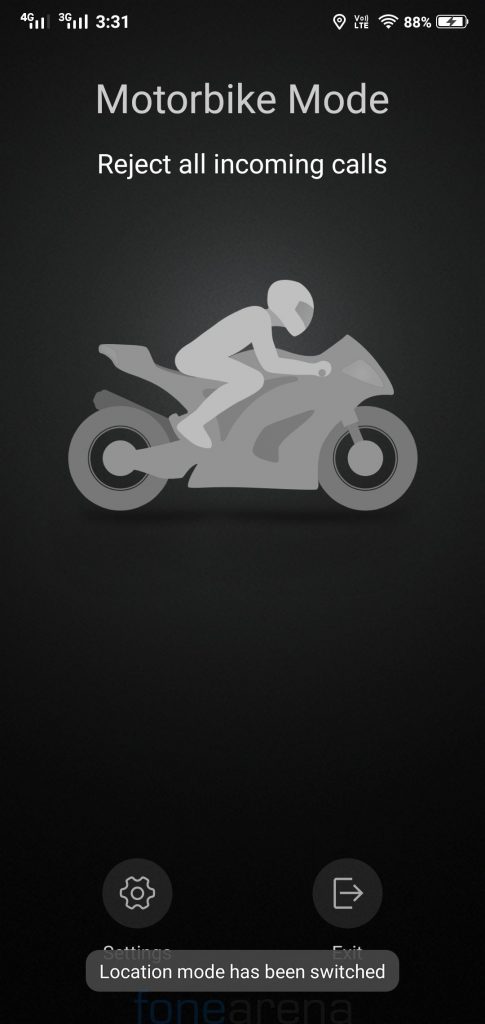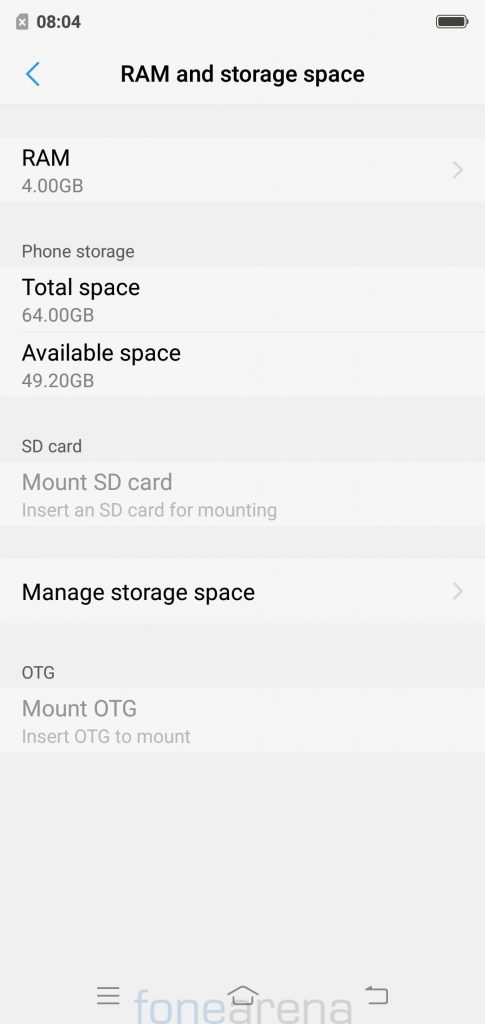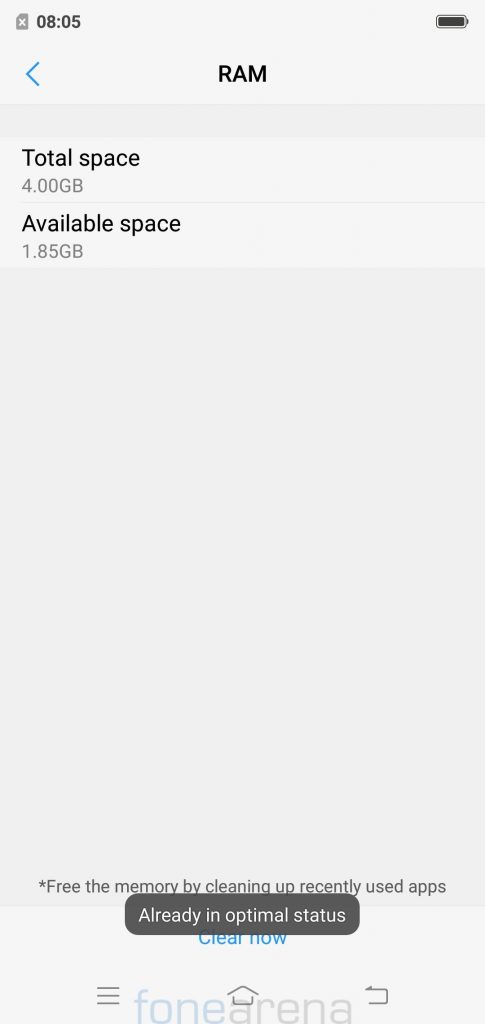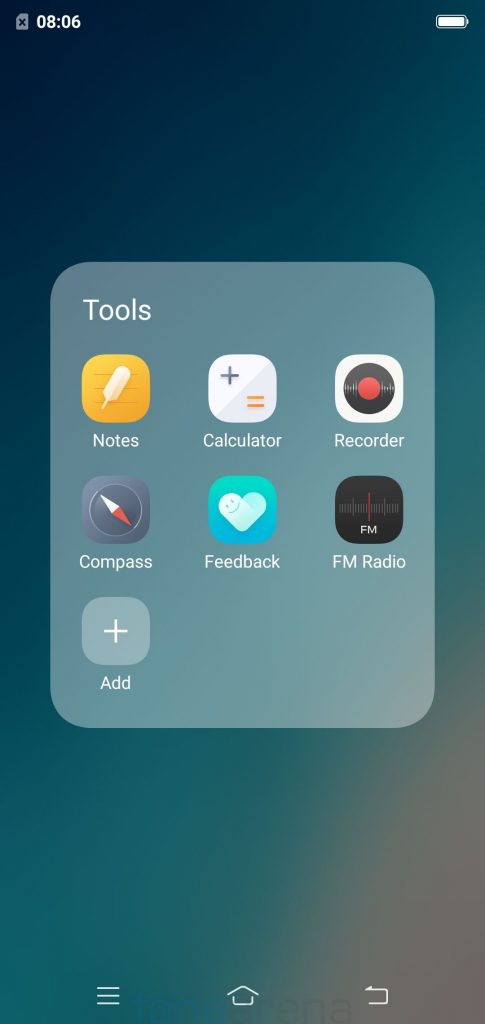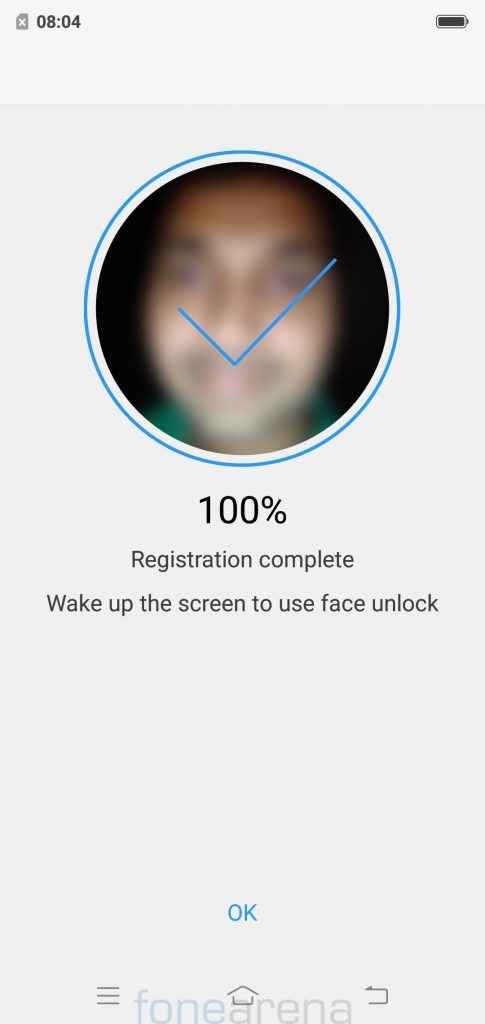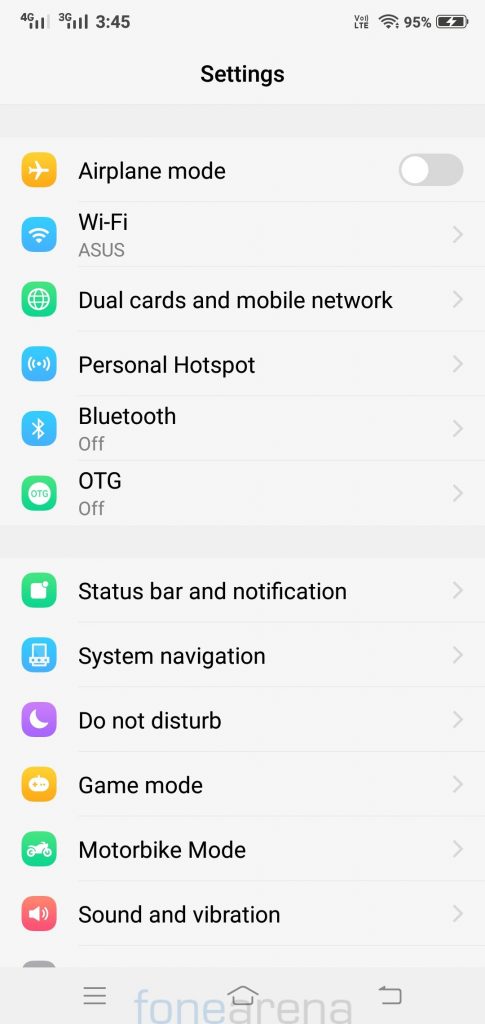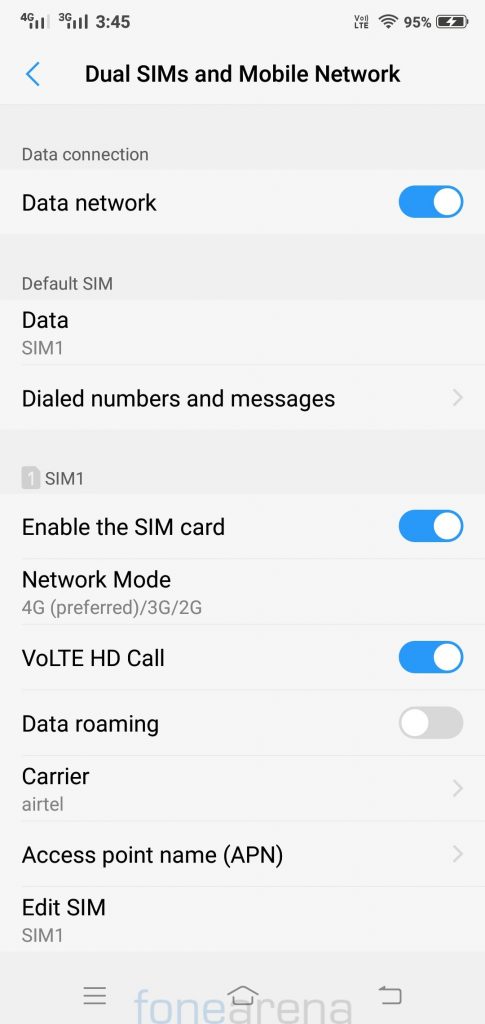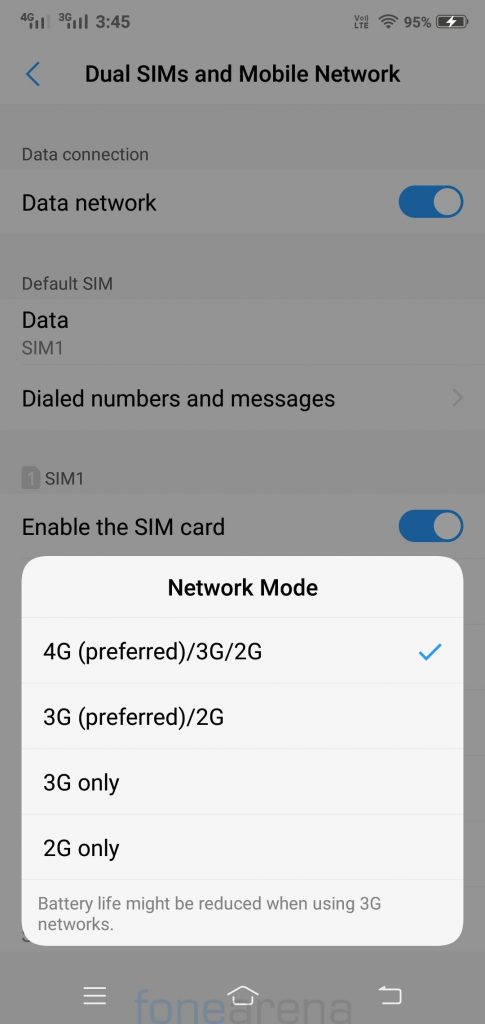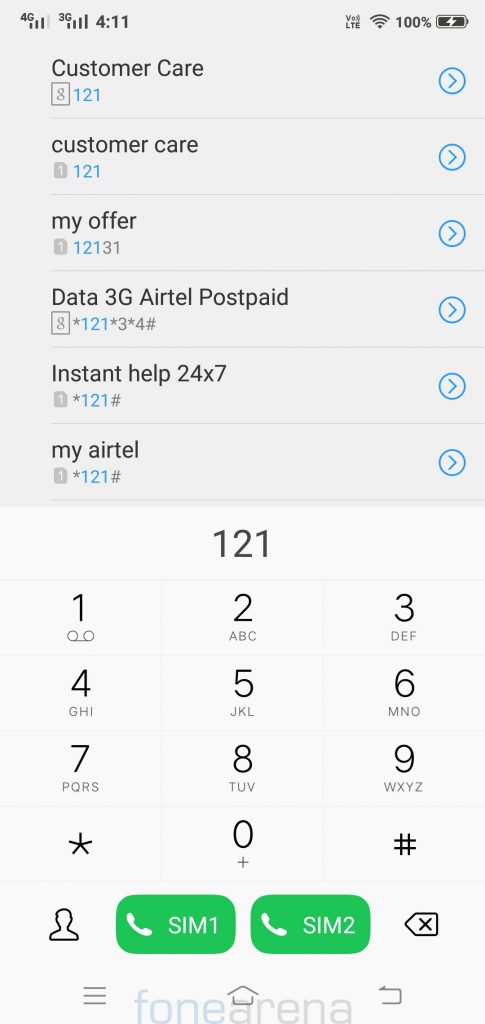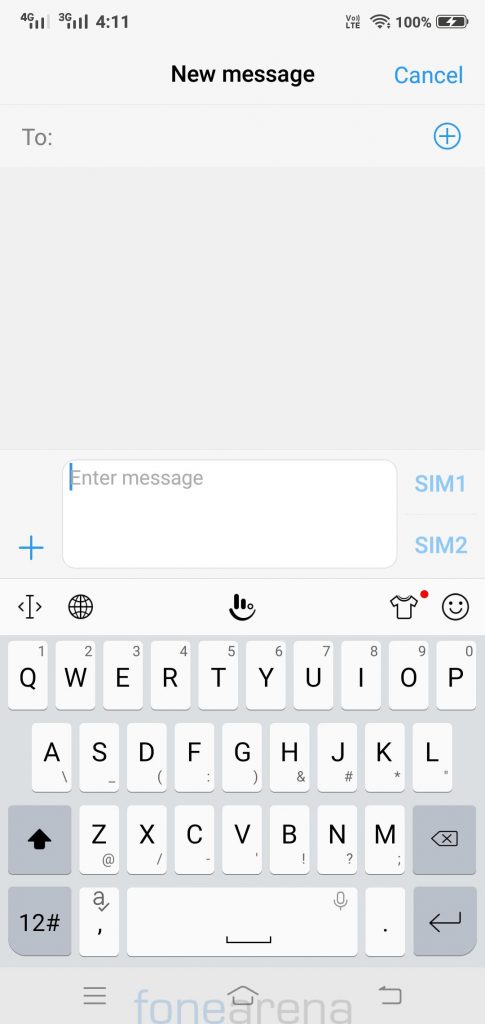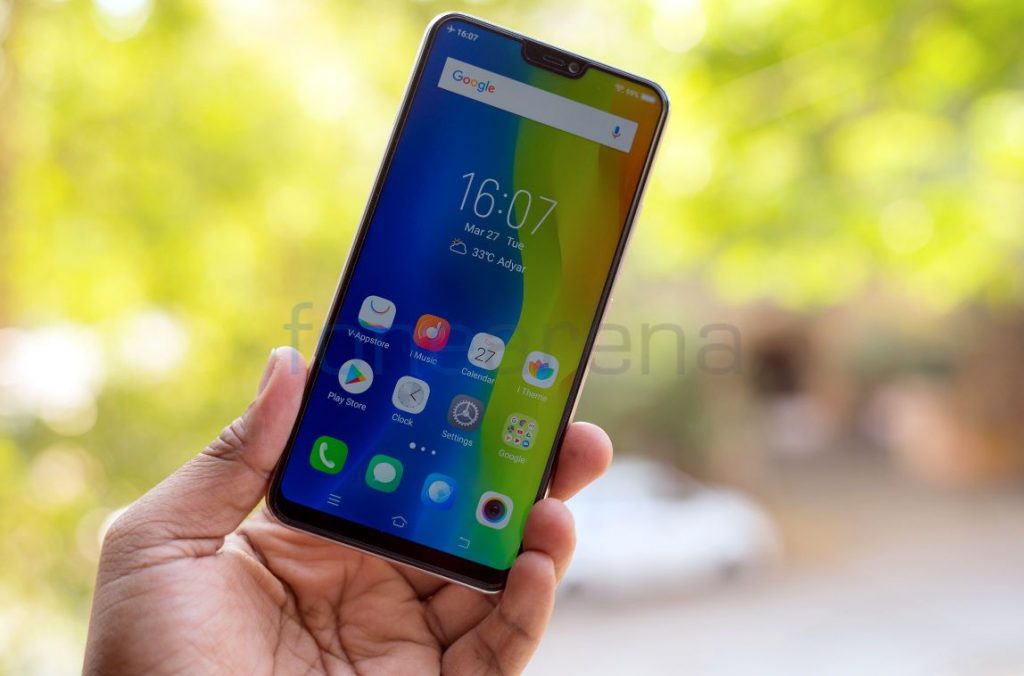
Vivo launched the V9 smartphone in India last month. It is one of the first Android smartphones with a display notch in India. The successor of last year’s Vivo V7 has dual rear cameras, 24-megapixel front camera and Android 8.1 (Oreo) out of the box. How good is the smartphone? Let us find out in the complete review.
Unboxing
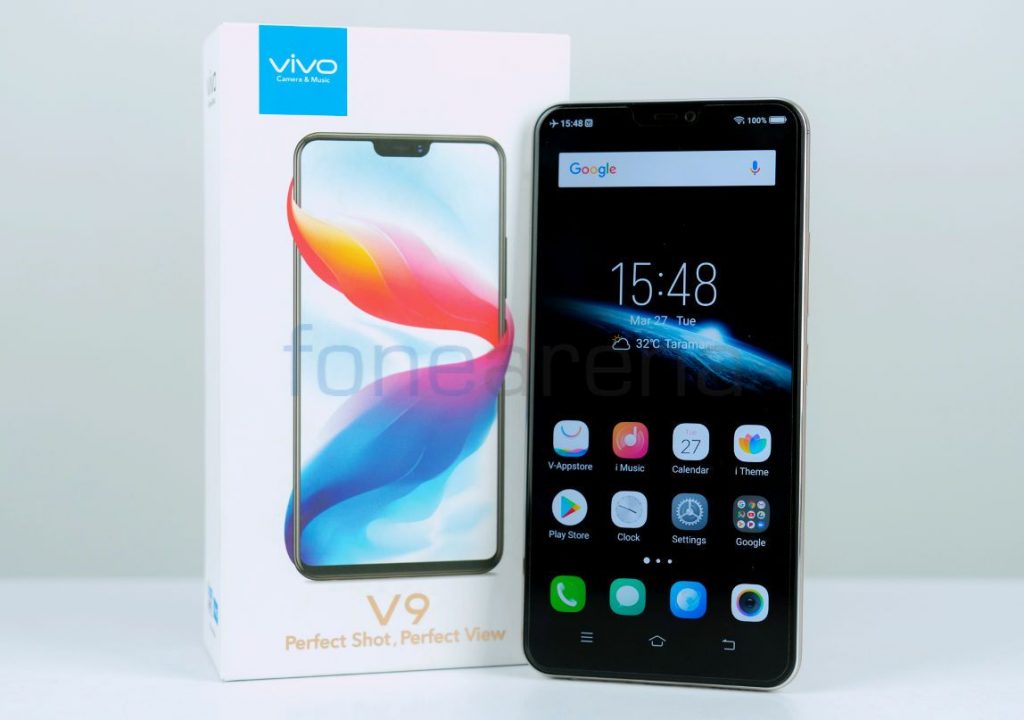
We unboxed the smartphone recently, check out the video.
Box contents
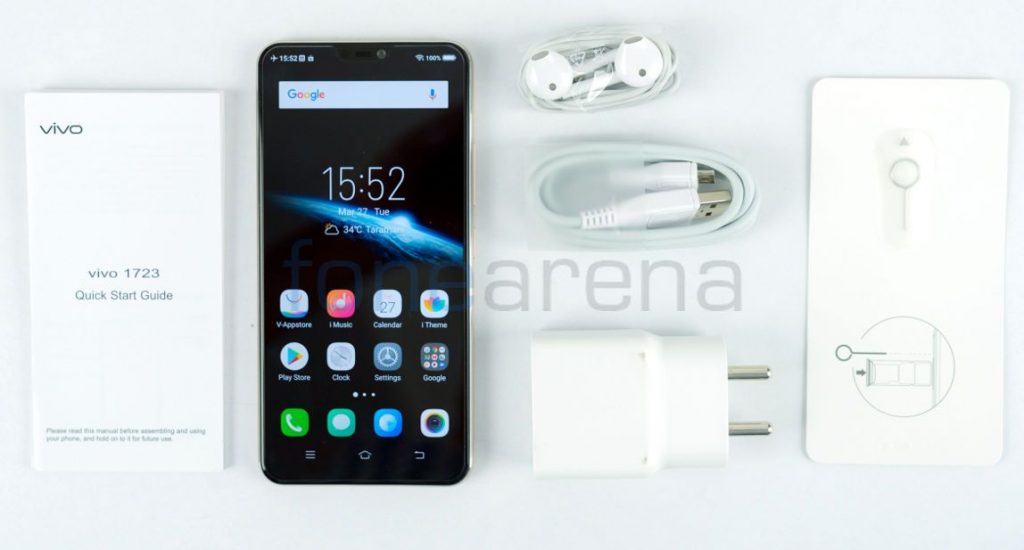
- Vivo V9 smartphone in Champagne Gold
- 2-pin charger (5V-2A)
- Micro USB cable
- Headset
- Clear protective case
- SIM Ejector tool
- Quick start guide and warranty information
Display, Hardware and Design
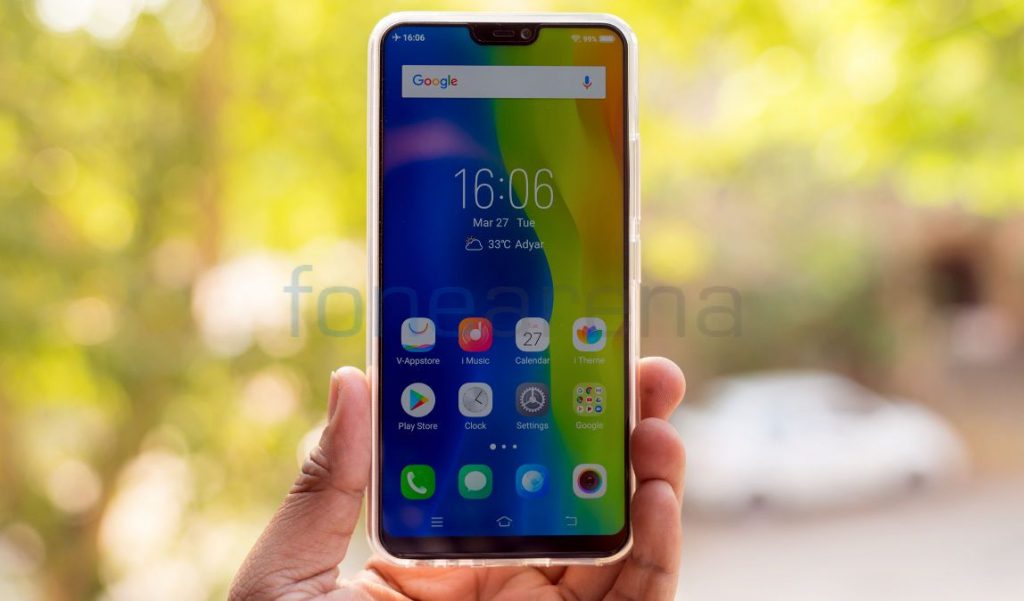
Unlike the HD+ display on the V7, Vivo has moved to Full HD+ display on the V9, which has a large 6.3-inch Full HD+ display with a resolution of 2280 by 1080 pixels and a pixel density of about 400 PPI, 19:9 aspect ratio and 90% screen-to-body ratio, thanks to 1.75mm slim bezels. The display is bright, colors are vibrant and the viewing angles are good as well. It also has Corning Gorilla Glass 3 protection.
It doesn’t have an option to hide the notch when you are on the homescreen, but you can hide it (by displaying a black bar around the notch), when you are in a specific app like Instagram so that the content in Instagram stories doesn’t get hidden. Since the phone has a 19:9 screen, watching normal 4:3 videos show black bars on the sides. The phone doesn’t have pinch to zoom to fit the screen on YouTube, even though it is available on the default video player app.
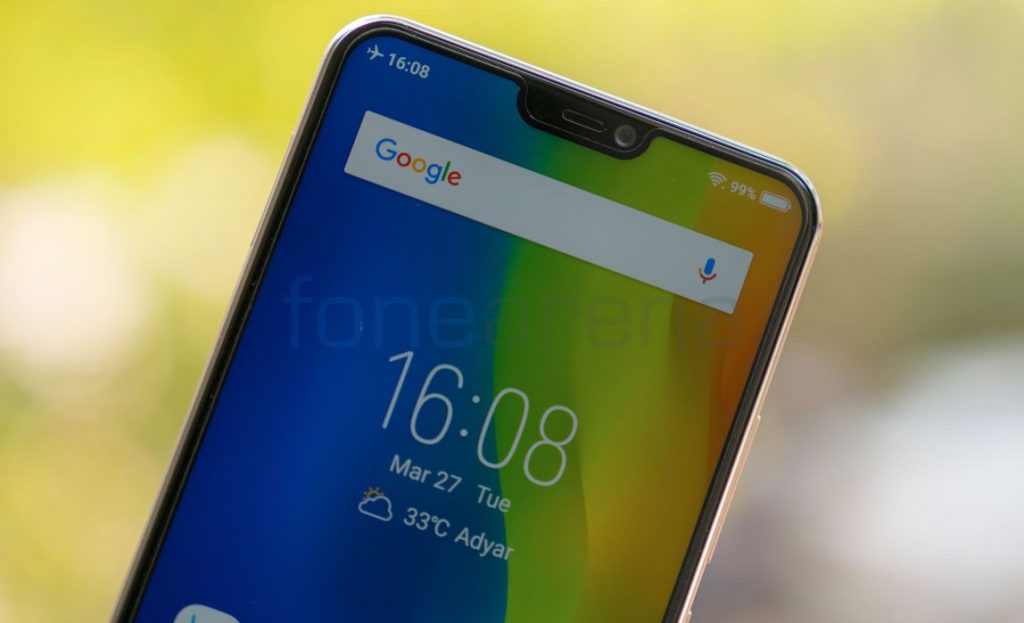
There is a iPhone-X style notch on the top, but it is smaller since it only houses the earpiece, 24-megapixel front camera and the usual set of proximity and ambient light sensors. It also has a tiny notification LED above the earpiece. It also has magnetic sensors otherwise known as magnetometer, but doesn’t have gyroscope.
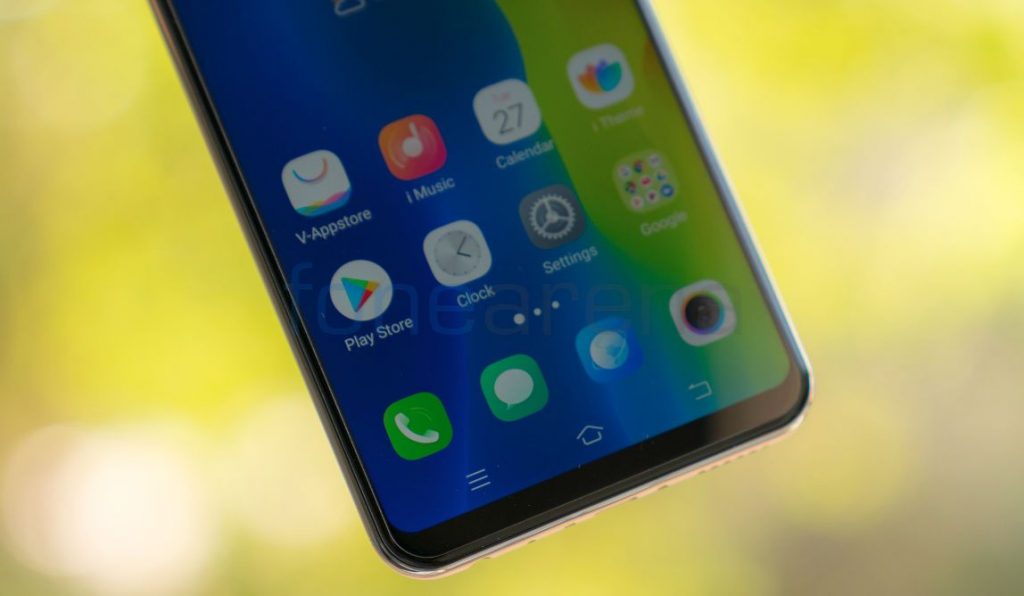
Even though the phone has a small chin below the screen, it uses on-screen buttons. You can also hide these keys to turn on the virtual navigation keys that enables “Sliding Gesture” mode to access menu, home and back buttons just by sliding from bottom to top from the corresponding area of the navigation key at the bottom to access them, slide upward from the bottom center of the screen and hold to show the list of background apps and slide left or right in the bottom of the screen to switch to the interface of an adjacent app.
You can also change the order of the menu and back keys, and there is also an option to change the icon pattern and also the color of the navigation bar.
The volume rockers and the power button are present on the right side, Dedicated dual SIM and microSD slot is present on the left and the loudspeaker grill, micro USB port, primary microphone and the 3.5mm audio jack are crammed on the bottom. It is a good move that the company continues to offer dedicated slots of SIM and microSD. There is an option to enable SOS Call that lets you press the power button three times to call 112 emergency number.
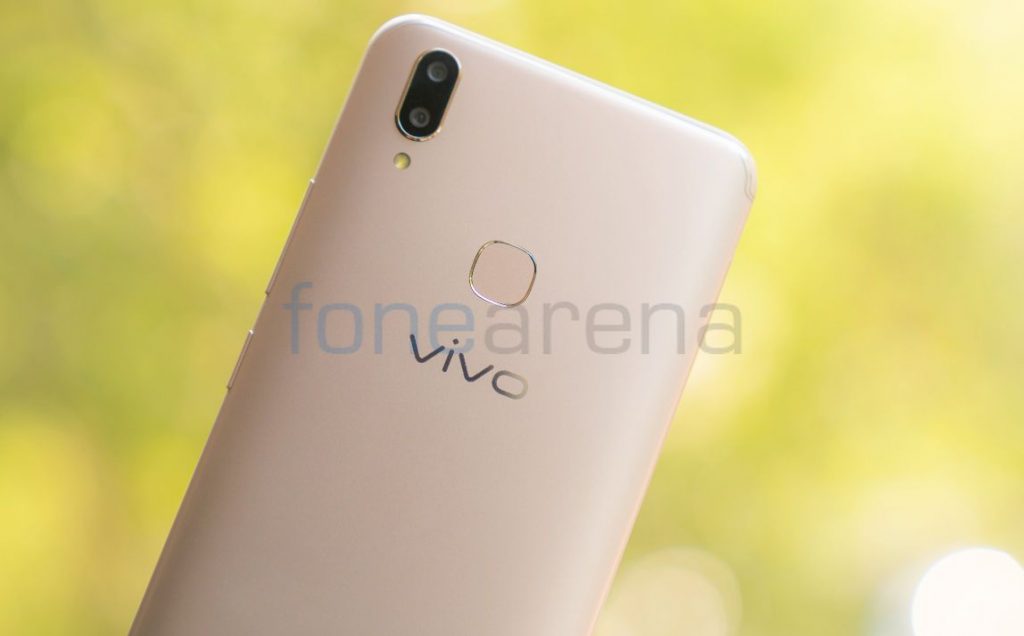
On the back there is a 16-megapixel camera along with a secondary 5-megapixel camera. There is a LED flash below it. Even though the phone has a big screen, the fingerprint sensor is easy to access, thanks to its compact body. The phone measures 154.81 x 75.03 x 7.89mm, almost same as a phone with a 5.5-inch screen and weighs 150 grams.
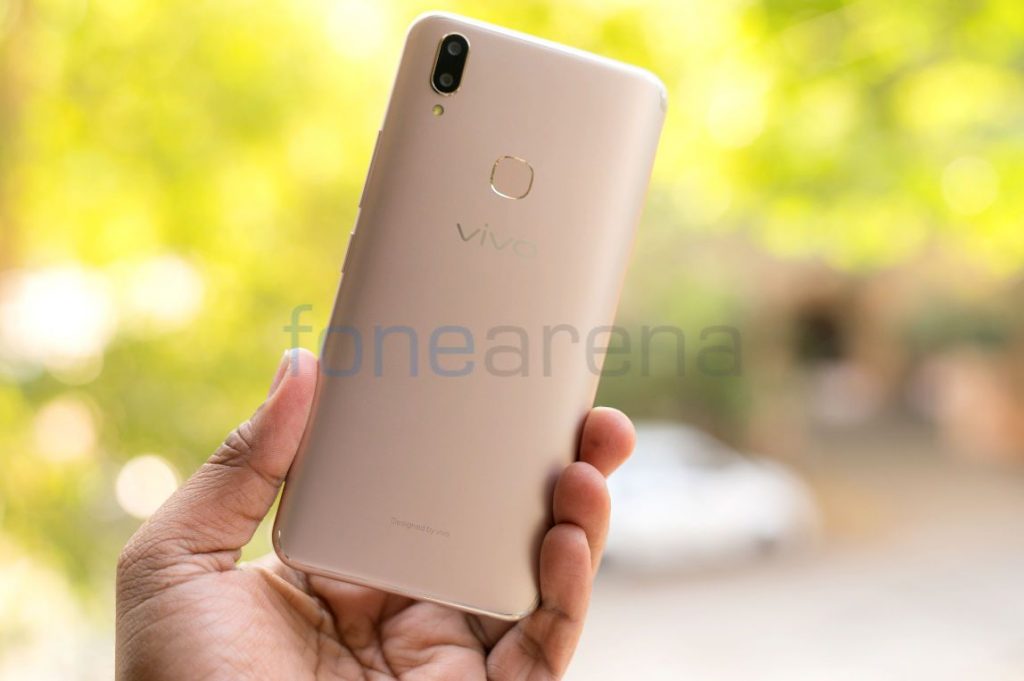
Even though the phone has a unibody design, it only has a metal frame with a plastic body, so it doesn’t offer a premium look. The phone packs a 3260mAh battery.
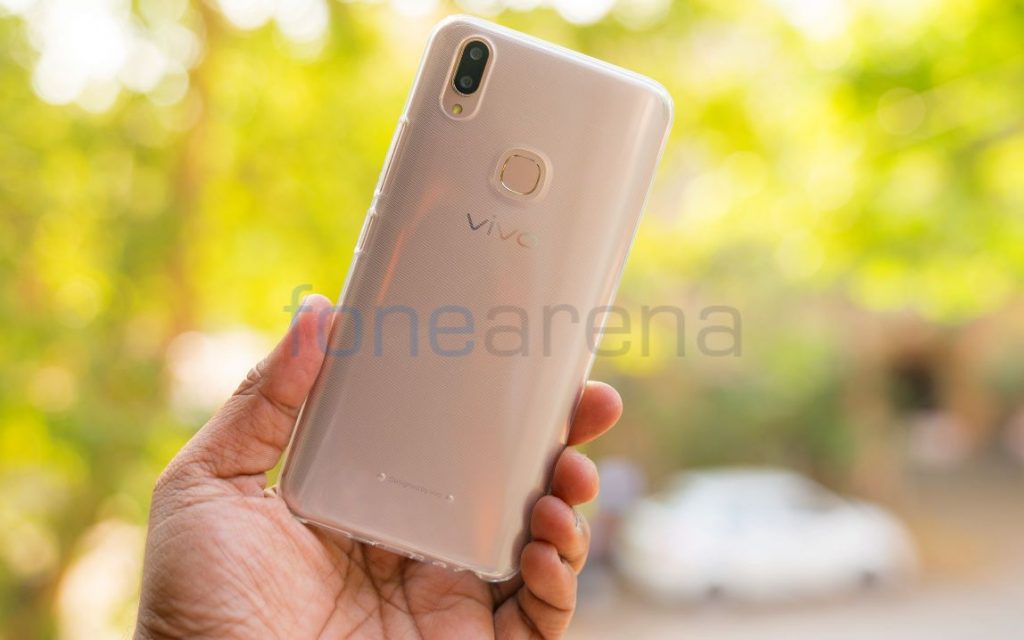
Smooth finish on the back might be slippery, but the bundled clear protective case comes in handy.
Camera
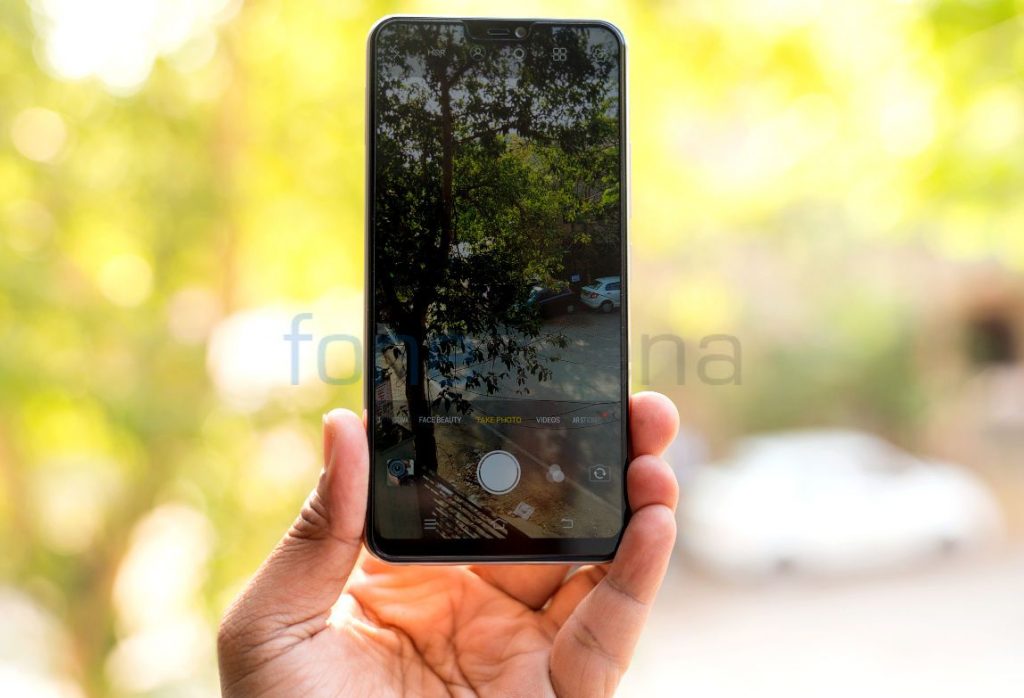
The phone has a 16-megapixel rear camera with single LED flash, f/2.0 aperture, along with a secondary 5-megapixel camera to capture depth information. It also has a 24-megapixel front-facing camera with LED flash and f/2.0 aperture with A.I face beauty and has AR Stickers.
Apart from the standard auto mode, it has Professional mode (to adjust Exposure, ISO (50 to 3200), Shutter speed, White balance and Focus manually), Panorama, PPT mode, Time-lapse, Ultra HD (Capture 63MP images by stitching several shots), Slow motion and AR Stickers. There is also face beauty mode (to adjust skin tone, buffing and whitening) for both the rear front cameras with live preview. It has portrait mode for both front and rear cameras that blurs backgrounds. Even thought it has a single front camera, it uses software to blur the background, which is not perfect. Bokeh for rear camera uses dual rear cameras so that you can adjust the focus (from f/0.95 to f/16) even after capturing the image with the mode.
Coming to the image quality. Daylight shots and macro shots were good, but sometimes the image is not bright. HDR shots were better with improved contrast and saturation. Low-light shots had noise and the phone automatically switches to low-light mode if there is poor lighting. Images with flash were good and the flash is not overpowering even in closeup shots. The front-facing camera is one of the best in the range for capturing selfies. It is also good for video chats.
Check out some camera samples (Click the image to view the full-resolution sample).

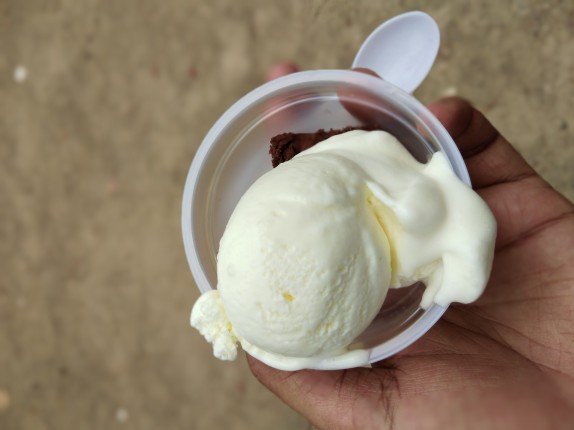


It can record videos at maximum 4K resolution at 30fps, but the slow motion is recorded only at 480p resolution. Video quality is decent. Check out the sample below.
Check out more Vivo V9 Camera Samples here.
Software, UI and Apps
Coming to the software, the phone runs on Android 8.1 (Oreo) with Funtouch OS 4.0on top. The skin is similar to other skins from Chinese OEMs. The quick settings menu comes up from the bottom part of the screen.
The phone has several features for on-handed usage when entering lockscreen pin or pattern, keyboard and also has mini screen gestures. Smart split lets you handle two apps easily at the same time. Smart motion has smart wake option lets you launch an app using gestures and several other features such as Smart call, Smart answer, Smart switch, Smart mute and wave to hands free. App clone feature lets you clone an app to use them with two separate accounts. This feature is available only in select apps.
There is a new Motorbike Mode in the settings that lets you auto reject calls, auto respond with SMS and mute notifications so that you can focus on riding.
Out of 4GB RAM, 3.56GB of RAM is usable, out of which 1.85GB of RAM is free when default apps are running in the background. Out of 64GB of storage, about 49.2GB is free out of the box.
Apart from the usual set of utility apps and Google apps, the phone comes with Flipkart, Amazon Prime Video, UC Browser, Amazon, NewsPoint, WhatsApp, Facebook and WPS Office apps pre-loaded. These apps can be uninstalled manually.
Fingerprint Sensor and Face Unlock
The fingerprint sensor is present on the back and is easy to access. It is quick to unlock the phone most of the times as soon as you place your finger on the sensor. It unlocks the phone even when the screen is off, so you don’t need to unlock the phone for the fingerprint recognition to work. You can add up to 5 fingerprints and you can also use your fingerprint to authorize Google Play purchases. The Face unlock is also quick to unlock the phone.
Music Player and FM Radio
i Music is the default music player for playback, but it doesn’t have an equalizer. It has FM Radio with FM recording. It can play 1080p Full HD videos smoothly. The speaker is present on the bottom part of the phone and is quite loud even in noisy environment. Audio doesn’t get muffled when the phone is placed on a flat surface since it is on the bottom. Audio quality is good through earphones, but the bundled headset is just average.
Connectivity, Calling and Messaging
It has 4G connectivity with support for 4G VoLTE for Reliance Jio and Airtel. Both the SIM slots have 4G support, but you can use 4G on only one SIM at a time. Other connectivity features include, WiFi 802.11 a/b/g/n (2.4GHz + 5GHz), Bluetooth 4.2 and GPS. It also has USB OTG (on-the-go) support, but you have to enable OTG option in the settings before using it.
Since this is a dual SIM phone you get option to call or send SMS from either SIMs. It comes with Touchpal as the default keyboard. We did not face any call drops or any other issues.
Performance and Benchmarks
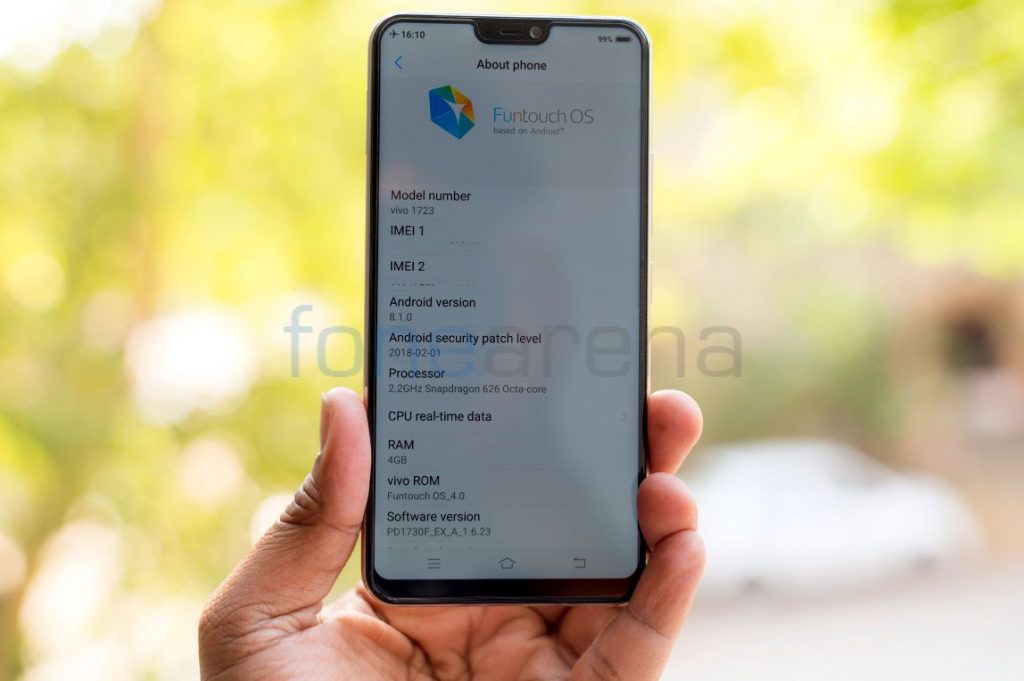
Even though CPU-Z shows the SoC as Snapdragon 625, it is powered by an Octa-Core Qualcomm Snapdragon 626 64-bit Mobile Platform that has eight ARM Cortex A53 cores clocked at 2.2GHz per core. The performance is good. We tested several games, which were smooth and graphics is also good, thanks to the Adreno 506 GPU. 4GB of RAM is more than enough for multitasking by running several apps in the background. Still, Vivo could have gone with Snapdragon 636 or faster Snapdragon 660 SoC for the price. The phone gets a bit hot when using 4G or playing games for long, but it doesn’t get too hot. Check out some synthetic benchmark scores below.
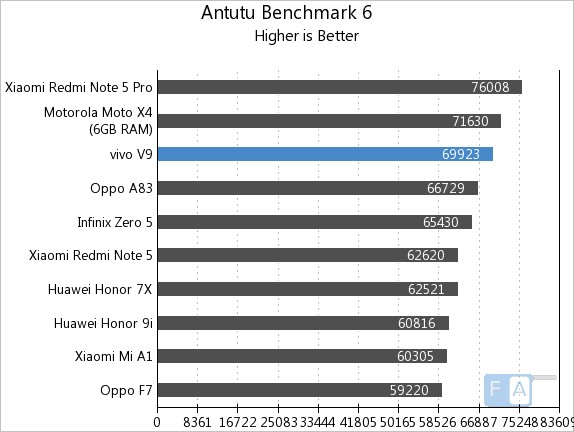
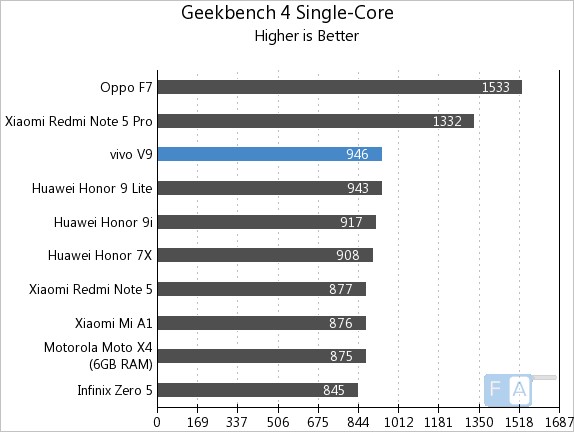
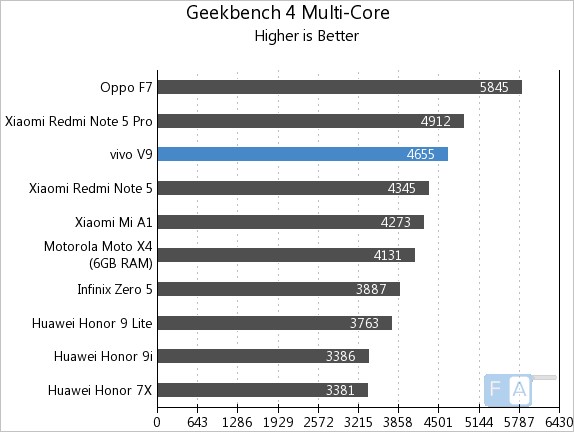

Battery life
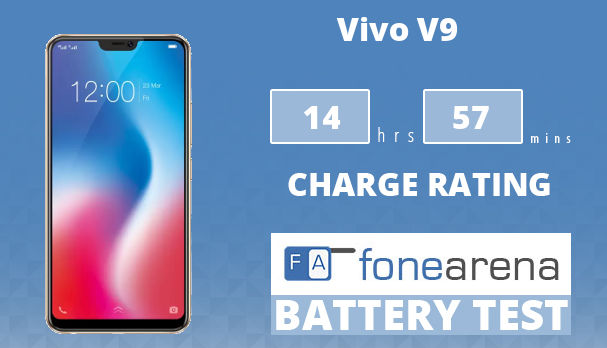
The phone packs a 3260mAh battery, which lasts for more than a day on a single charge with average use and whole day even with heavy use. It warns when an app is consuming more battery so you can close it. You can enable low power mode or super power-saving modes to extend the battery life.
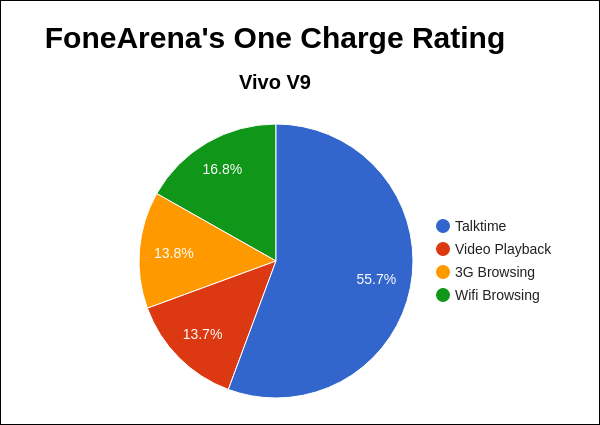
It achieved a One Charge Rating of 14 hours and 57 minutes in our battery test, better than the Vivo V7+. This is decent for a phone with a 3260mAh battery and a huge 6.3-inch screen. Even though the phone doesn’t have support for fast charging, it takes 49 minutes to charge from 0 to 50% and 2 hours and 13 minutes to charge from 0 to 100%. We will bring you the complete set of battery life test results soon.
Conclusion
Overall, the Vivo V9 is decent smartphone with a large FullView 19:9 display in a compact body, runs Android 8.1 (Oreo) and has good front and decent rear cameras. The phone also has dedicated SIM and microSD card slots, but Vivo could have gone with a better Snapdragon SoC and a metal body to compete with other phones in the range to justify the price tag of Rs. 22,990.
The phone is available from Amazon.in, Flipkart as well as offline retailers across India. To summarize, here are the pros and cons of the smartphone.
Pros
- Large 6.3-inch screen in a compact body
- Good front camera
- Good battery life
- Dedicated SIM and microSD slots
Cons
- Doesn’t have metal body
- Priced slightly on the higher side

